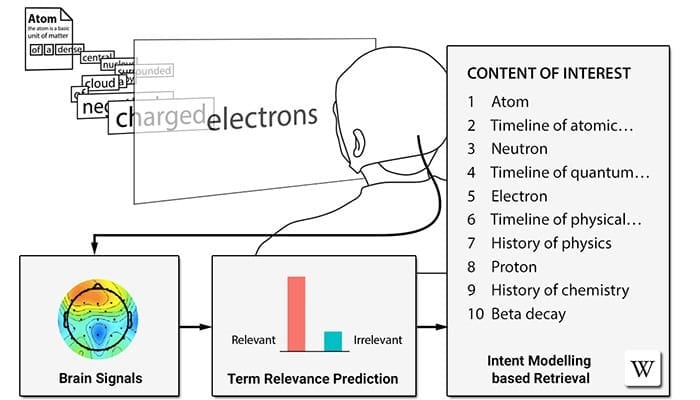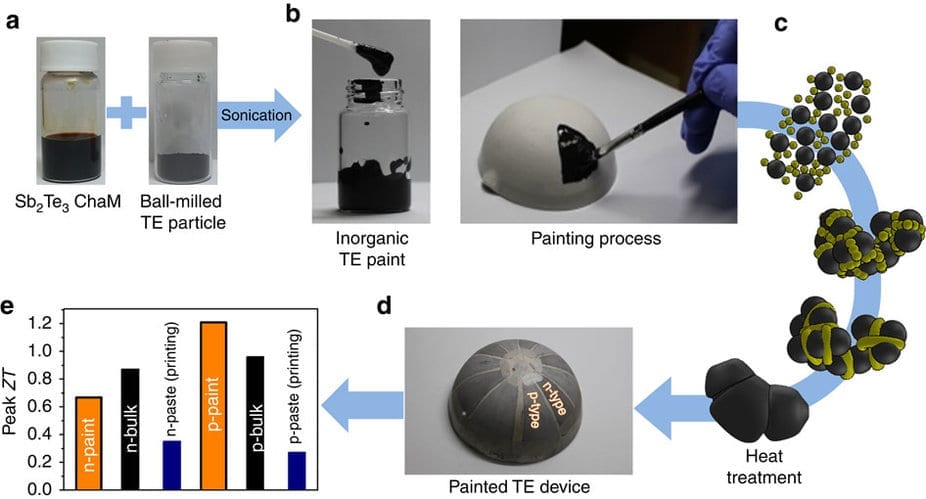
For the first time, information retrieval is possible with the help of EEG interpreted with machine learning.
In a study conducted by the Helsinki Institute for Information Technology (HIIT) and the Centre of Excellence in Computational Inference (COIN), laboratory test subjects read the introductions of Wikipedia articles of their own choice. During the reading session, the test subjects’ EEG was recorded, and the readings were then used to model which key words the subjects found interesting.
‘The aim was to study if EEG can be used to identify the words relevant to a test subject, to predict a subject’s search intentions and to use this information to recommend new relevant and interesting documents to the subject. There are millions of documents in the English Wikipedia, so the recommendation accuracy was studied against this vast but controllable corpus’, says HIIT researcher Tuukka Ruotsalo.
Due to the noise in brain signals, machine learning was used for modelling, so that relevance and interest could be identified by learning the EEG responses. With the help of machine learning methods, it was possible to identify informative words, so they were also useful in the information retrieval application.
‘Information overload is a part of everyday life, and it is impossible to react to all the information we see. And according to this study, we don’t need to; EEG responses measured from brain signals can be used to predict a user’s reactions and intent’, tells HIIT researcher Manuel Eugster.
Based on the study, brain signals could be used to successfully predict other Wikipedia content that would interest the user.
‘Applying the method in real information retrieval situations seems promising based on the research findings. Nowadays, we use a lot of our working time searching for information, and there is much room in making knowledge work more effective, but practical applications still need more work. The main goal of this study was to show that this kind of new thing was possible in the first place’, tells Professor at the Department of Computer Science and Director of COIN Samuel Kaski.
‘It is possible that, in the future, EEG sensors can be worn comfortably. This way, machines could assist humans by automatically observing, marking and gathering relevant information by monitoring EEG responses’, adds Ruotsalo.
The study was carried out in cooperation by the Helsinki Institute for Information Technology (HIIT), which is jointly run by Aalto University and the University of Helsinki, and the Centre of Excellence in Computational Inference (COIN). The study has been funded by the EU, the Academy of Finland as a part of the COIN study on machine learning and advanced interfaces, and the Revolution of Knowledge Work project by Tekes.
See the video:
Learn more: EEG reveals information essential to users
[osd_subscribe categories=’brain-computer-interface’ placeholder=’Email Address’ button_text=’Subscribe Now for any new posts on the topic “BRAIN-COMPUTER INTERFACE”‘]
Receive an email update when we add a new BRAIN-COMPUTER INTERFACE article.
The Latest on: Machine learning plus EEG predict a subject’s search intentions
[google_news title=”” keyword=”Machine learning plus EEG predict a subject’s search intentions” num_posts=”10″ blurb_length=”0″ show_thumb=”left”]
via Google News
The Latest on: Machine learning plus EEG predict a subject’s search intentions
- Prediction Machine Favors UNC Basketball for Sharpshooting Transferon April 27, 2024 at 5:00 pm
Around the same time, On3's Jamie Shaw forecasted the same outcome in the Recruiting Prediction Machine. And on Saturday afternoon, with rumblings escalating on social media about UNC's seemingly ...
- Machine Learningon April 27, 2024 at 5:00 pm
LLMs are fantastically good at communicating despite not actually knowing what they are saying, and training them usually relies on PyTorch deep learning library, itself written in Python.
- Using Machine Learning to Predict Unplanned Hospital Utilization and Chemotherapy Management From Patient-Reported Outcome Measureson April 26, 2024 at 1:21 pm
RF and SVMs had the highest performance for predicting admissions and changes to chemotherapy ... logistic regression; ML, machine learning; NN, neural network; PROMs, patient-reported outcome ...
- machine learningon April 25, 2024 at 6:55 am
Now, using deep-learning AI models, software can create not only... On Tuesday, Anthropic's Claude 3 Opus large language model (LLM) surpassed OpenAI's GPT-4 (which powers ChatGPT) for the first ...
- New AI-Technology Estimates Brain Age Using Low-Cost EEG Deviceon April 24, 2024 at 1:32 pm
Researchers from Drexel University’s Creativity Research Lab developed an artificial intelligence technique that can effectively estimate an individual’s brain age based on electroencephalogram (EEG) ...
- Researchers explore causal machine learning, a new advancement for AI in health careon April 19, 2024 at 9:31 am
Artificial intelligence is making progress in the medical arena. When it comes to imaging techniques and the calculation of health risks, there is a plethora of AI methods in development and testing ...
- Alphabet X’s Bellwether harnesses AI to help predict natural disasterson April 17, 2024 at 2:02 pm
Predicting such disasters before they get ... but our team has harnessed some of the most recent advances in machine learning (plus some straight-up solid engineering) to re-think the whole ...
- Machine Learning Newson April 15, 2024 at 5:00 pm
Voltage Park will lease access to 24,000 clustered NVIDIA GPUs by the hour or month to help small startups and researchers model machine learning. Io.net has built a decentralized physical ...
via Bing News










